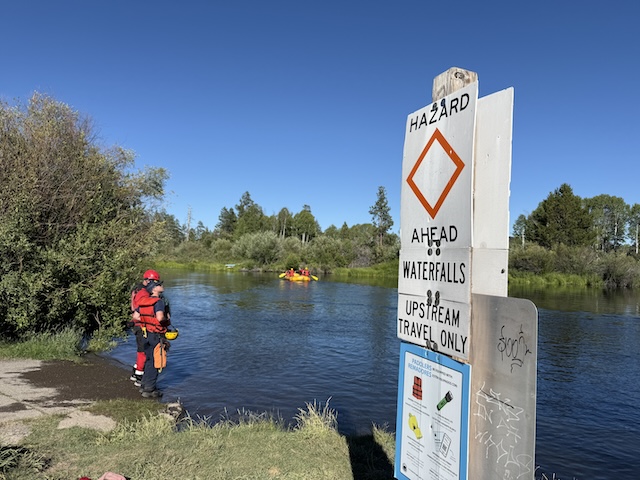Yellowstone River tributary seems clear of nonnative trout
Published 12:00 am Wednesday, September 7, 2016
The second season of poisoning brook trout in a tributary to one of Yellowstone National Park’s most-prized cutthroat trout fisheries appears to have eliminated the nonnative fish.
“We’re pretty confident this is totally done,” said Todd Koel, director of Yellowstone’s native fish conservation program.
Trending
“If there’s one out there, he’s going to have a tough time finding a mate.”
Concerted effort
Over the last two weeks, about 40 fishery personnel from the park, the Forest Service and fish and game agencies in Montana and Wyoming worked together to remove live native Yellowstone cutthroat trout, put them in a holding stream, and then poison about 28 miles of Soda Butte Creek and its tributaries. The same effort took place last fall.
“The real hallmark of this project has been the cooperation,” said Bob Gibson, of Montana Fish, Wildlife and Parks. “That’s been one of the sweet spots.”
Soda Butte Creek is a tributary to the Lamar River, which so far has evaded any brook trout invasion. The Lamar River is a tributary to the Yellowstone River. The streams all connect within the boundaries of Yellowstone National Park’s Northern Range, a stronghold for bison, grizzly bears and wolves.
“Those were the only brook trout in the whole Lamar system. That’s what made it such a priority,” Koel said. “So this is awesome to pull this off with so many agencies involved.”
Trending
The project caps unsuccessful efforts that began in 2004 to remove the brook trout through electro-fishing. The work is meant to give Yellowstone cutthroat trout — a species of concern in Montana — a better chance at survival.
Down to 2
Whereas last year the fish-removal project killed between 300 and 400 brook trout, this year only two immature males were taken. That’s in addition to any smaller young of the year fish that the agencies’ workers couldn’t locate and count.
After treating the water to detoxify any remnants of the fish poison, about 1,000 native cutthroat that had been captured and held in nearby Warm Creek were released back into Soda Butte Creek. They were followed shortly thereafter by another 800 Yellowstone cutthroat trout of catchable size raised in a Wyoming fish hatchery.
“So those pools are full of fish right now,” Koel said.
The project was deemed a slam dunk this year because the creek’s water flow was so low — 8 cubic feet per second compared to 18 cfs last year.
“Last year we thought it was really low,” Koel said.
But this year’s even lower flow means that all of the fish were more concentrated and therefore less likely to escape the poisoning. Unfortunately, that also means that roughly 1,000 Yellowstone cutthroat trout that weren’t caught by fisheries crews and removed for safekeeping were killed by the poison. All dead fish that were captured by the crews were buried so as not to attract bears or other predators.
The poison works by filtering into the bloodstream of only those animals that have gills. Such poisoning has been contentious, with opponents claiming that it is too indiscriminate.
To assure that there are no brook trout remaining, Gibson said fisheries biologists will “make another assay sometime next year.”
One newer technology that could make that examination easier is called environmental DNA analysis, or eDNA for short. By taking a sample of the stream’s water, running it through a filter and sending the filter to a lab, technicians can search for any signs of brook trout DNA in the water.
Since the ability of the new technology is still being reviewed, the water testing will also be followed up with electro-fishing to look for brook trout, Gibson said.
Piece of a large puzzle
With nonnative brook trout removed from Soda Butte Creek, the park’s fisheries staff is one step closer to returning Yellowstone to a native fish stronghold, yet there are many waters still harboring introduced fish species.
Out of 400 miles of Yellowstone’s waters that originally supported native species, only 30 miles did not include introduced fish by 2013. In the past few years, the work of fisheries staff has increased that number to about 80 miles of streams and 50 acres of lakes, including Goose Lake in the Firehole River drainage.
But, as Koel noted, “The park is huge.”
Streams already restored include Elk Creek, a tributary to the Yellowstone; Grayling Creek, which flows into Hebgen Lake; and Specimen Creek, a tributary to the Gallatin River. Still in the works are plans to treat Tower Creek, a tributary to the Yellowstone River which is very remote and large, and the upper Gibbon River watershed between Norris and Canyon, including Grebe and Wolf lakes, Koel said.
Lake trout battle
One of the most daunting and all-consuming tasks the Park Service has faced is trying to reduce the number of lake trout in Yellowstone Lake, which was once the Yellowstone cutthroat trout’s refuge. Since netting efforts began to target the lake trout, more than 2 million have been killed. Last year set a new record with more than 315,000 netted.
With a month and a half of the netting season still left, crews this year have already captured 288,000 lake trout.
“We’ll break all of our records,” Koel said. “The lake trout numbers aren’t crashing yet, but the whole population looks like we’re crushing it. All signs point to it’s working.”
Once the population crashes, the park will be looking to methods other than netting to ensure the lake trout remain suppressed. One new option that has shown promise in laboratory tests is dumping the dead lake trout taken in nets on top of the lake trout spawning areas.
With the increased removal of lake trout, Koel said anglers and his fishery staff are seeing a strong rebound in cutthroat trout.
“The cutthroat fishing is phenomenal,” he said, from downstream of the lake in the LeHardy Rapids area to upstream in the Thorofare region. Bears were also captured on camera this spring fishing in cutthroat trout spawning streams.
“So we’re pretty excited,” Koel said. “It is kind of returning to what we saw in the ’80s when it was more common.”








